Safari Day 3 (July 11, 2011)
Itinerary: hike to Bambata Cave Paintings, hike to White Rhino Cave Paintings, hike to World’s View and Cecil John Rhodes Grave
Animals spotted: baboon, waterbuck, rockdessies (hyraxes), rhino, birds (oriole, 7 sisters, black eagle), antelope, klipspringer, elephant shrew
We found out at breakfast today that our guide for the day would be Edwin instead of Billy. Billy was anxiously awaiting the arrival of his repaired generator and wanted to be at the lodge when it came. Edwin is a young guide, but very knowledgeable. Today he taught us everything we wanted to know and so much more.

Waterbuck on the road, probably waiting for us to pass so they could jump the fence and cross the road
The clouds only cleared a few times today to let a few rays of sunshine in. Despite the cold, cloudy weather, we headed out to hike to the Bambata caves. The walk was short at only 3km round trip and mostly flat through the woodland. Edwin pointed out plants and gave us both their medicinal and herbal usages. We found wild mint, wild rosemary, a plant that makes a basic antibiotic, plants that cured toothaches, and more. In fact, back to my analogy yesterday of feeling like Ayla in the Clan of the Cave Bear books, I once again felt like I was part of the book following Iza around and learning about plants.
While we hiked through the woodland, the rocks, hills, and trees blocked most of the wind and therefore the weather felt warmer. However, when we hiked up the rock to the Bambata caves, the wind whipped around us threatening to throw us off. Not literally, of course, but the way our clothes were flapping, you would have thought we’d be blown away.
The cave paintings in this cave were a little different from yesterday, but still demanded awe and respect for the early generations of artists. The humans portrayed in the paintings were far from just stick figures. They were shown with joints and usually in the process of hunting or another action. You could see stories unfolding on the walls. Unlike yesterday’s cave, this one had a dirt floor that had filled in over time. Off to the side, an area was sectioned off to show how deep the excavation went to dig up artifacts, bones, weapons, and more. This was a reasonably accurate way to date the paintings as well since specs from the paint could be found fallen off in the dirt and dated to different time periods.
The paintings all faced into the center of the cave and this was thought to be a spiritual location rather than a shelter. Several paintings were too hard to identify and others were extremely easy. We could see various animals with amazing clarity. Then, other animals looked like they belonged in the spiritual world and you might wonder what was going through the artist’s mind. In this day most artists were also associated with the spiritual leaders who might have found drugs to help link them to the world of the spirits.
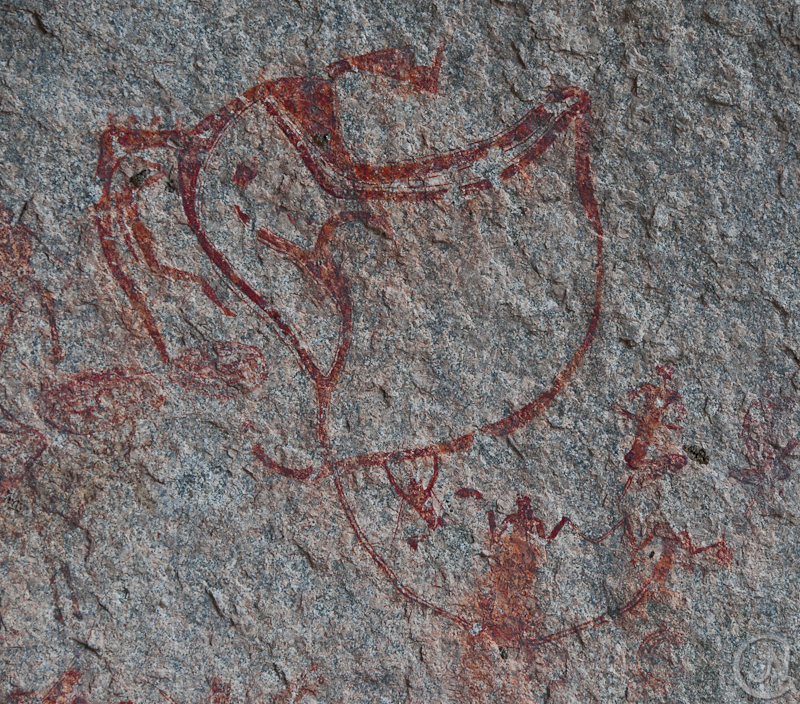
In paintings like this, each person sees a different image. I see a cartoon dog with it's mouth open. Others might see a bird. Still others see a beast with large teeth.
Edwin was very talkative giving us information about everything from how much work it takes to become a guide (years of study, exams, and real world experience) to the Zimbabwean history. The hike to the top of the rock/hill felt again like climbing Enchanted Rock in Texas. At the top, the wind kept us very chilled, but the 360-degree view was magnificent.
Edwin managed to locate some rock dassies (species that reminds me of a marmot) climbing around in the rock formation neighboring the one we were climbing. It took Mark and me about 3 minutes with binoculars to find them! We found impala and eland tracks in the woodland area as well and made guesses as to where they were going and when they had been here.
Lunch was served back at camp and after a quick break we drove out to see the Rhino Cave paintings located in another area of the park. We entered through the north end of the recreational park and passed a station with many armed guards. The guards are posted around the park to help with the anti-poaching efforts. Because Matobo Hills is home to rhino, poaching is a daily threat. We learned all about the anti-poaching techniques. Groups of people will even be dropped off in parts of the park for a week at a time to fend for themselves and protect the rhino against poaching. Poachers are after the rhino horns, so the park also has started cutting the horns off of their rhino to try and dissuade killing.
The hike to the Rhino Cave paintings was short and we found it fenced in. We could see the paintings through the fence, but it felt less special somehow. Since this cave is so accessible, they have to keep the graffiti artists away. The cave is named for the incredibly accurate and well done rhino paintings. Edwin pointed out a few paintings, but mostly we just looked on our own and tried to imagine what it would be like to stand here thousands of years ago starting at a blank wall deciding what to paint.
The last stop of the day took us to the ever popular World’s View and the grave site of Cecil John Rhodes. Rhodes, who came to the southern part of Africa from Europe on doctor’s orders for warm weather, dreamed of building a railway from Cape Town to Cairo. As we stood at the marker for his grave for possibly over an hour, we learned oodles about the Zim history from Edwin. This guy knows his stuff! We stayed up here to watch the sunset and get our history lesson. A little elephant shrew kept running from rock to rock as we stood shivering.
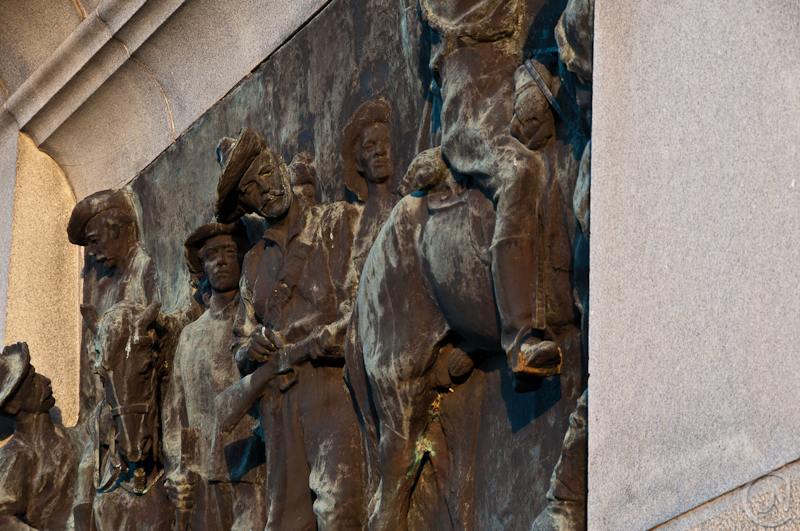
A monument at the tomb near Rhodes's grave. The monument honors Allan Wilson and his men who fell in fight against the Matabele on the Shaneani River on December 4, 1893. There was no survivor. The bronze figures on top of the monument depict the actual faces of the fallen taken from photos and memories. The materials used comes directly from the scraps found with the fallen men including the actual stirrups. The monument itself is controversial and some say that it should be torn down and the bodies returned to England.
When the light was dim, we headed back to the car and finally spotted a white rhino on the drive home! It was completely dark outside of course, so no photos, but the experience is burned in our memory. I don’t think the rhino knew we were coming. If he had been any closer to the road, we would have had to stop to perform rhino first aid. He made his grunting rhino noises and ran away into the bush as we watched hoping for a better glance.
Tonight was another cold night and we ate on trays around the fire late into the night swapping war stories with a couple from Harare, Edwin, and Billy. We hadn’t really figured that we’d run into so many vacationing native Zimbabweans and South Africans, but it was neat to hear about Zim life from them. We took notes on things to do in Victoria Falls and eventually had to leave the warm fire to head back to our freezing cold room. Thank goodness for the electric blanket in the bed!
I forgot to mention last night we heard the screams of a cat and baboon and can only assume that the leopard got his meal. There was quite a commotion!

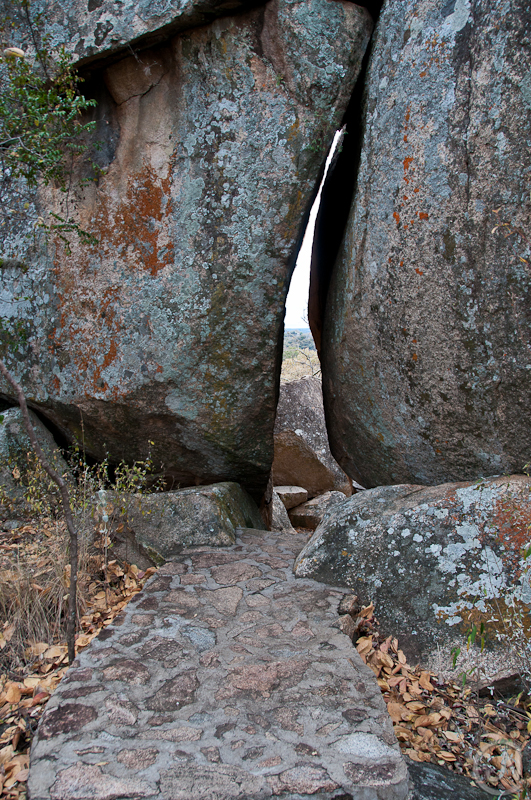
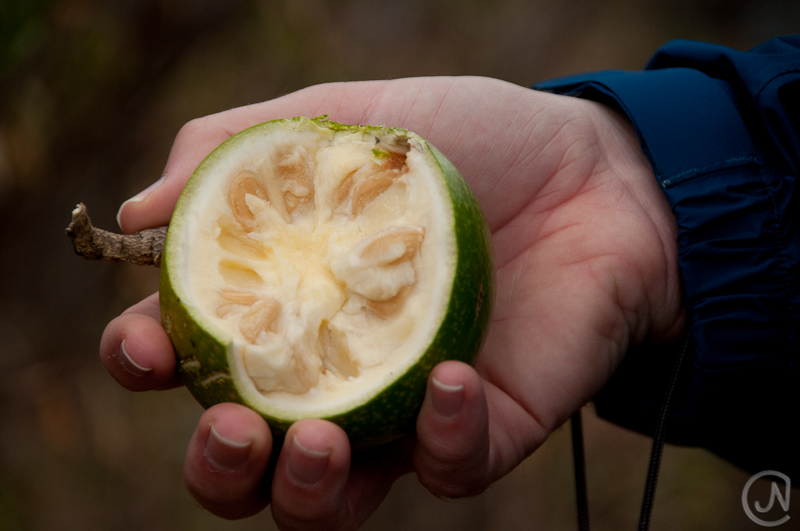
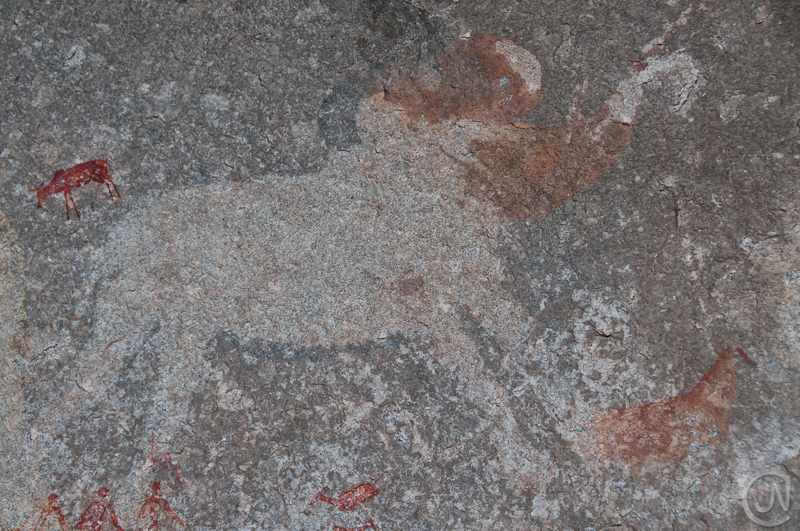
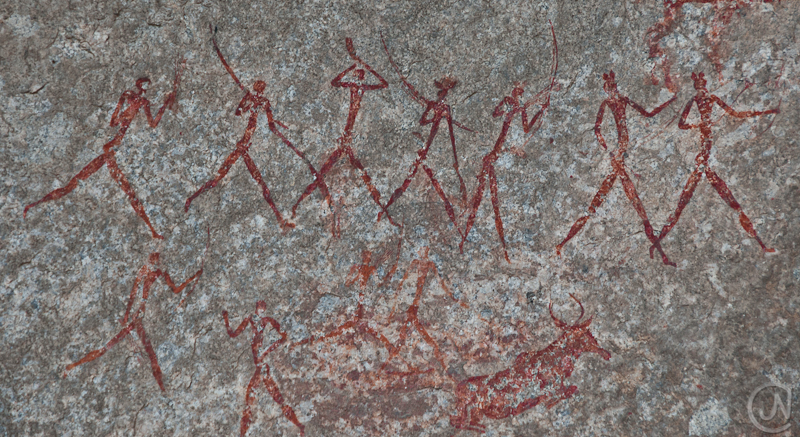


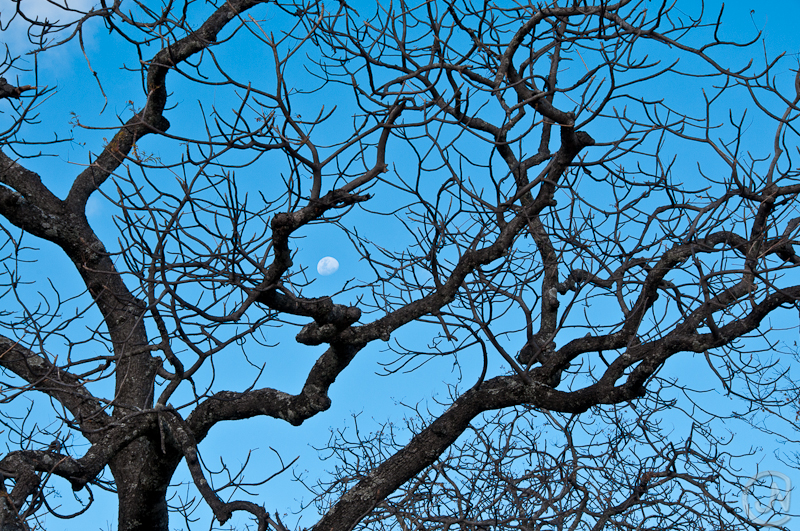
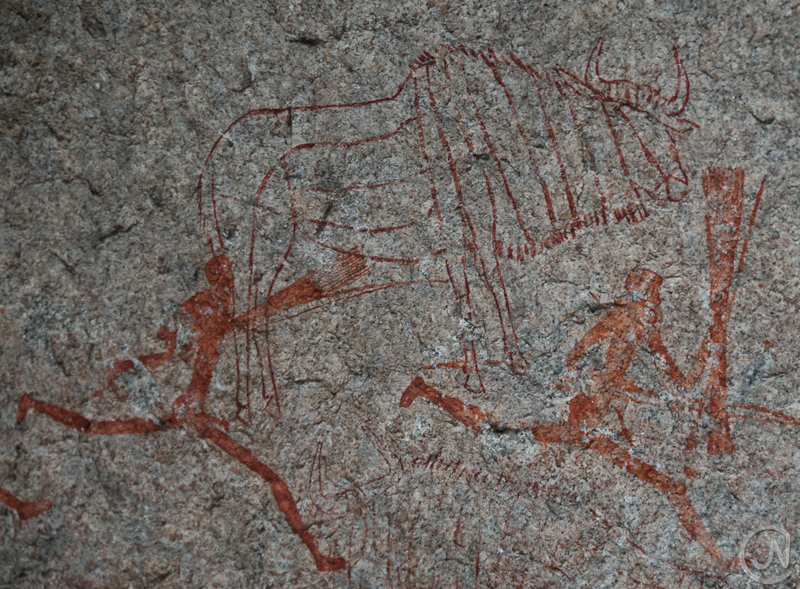
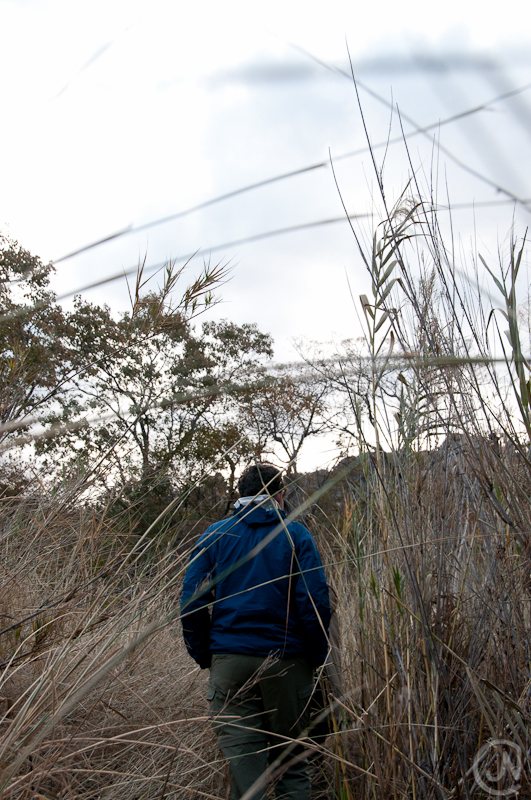
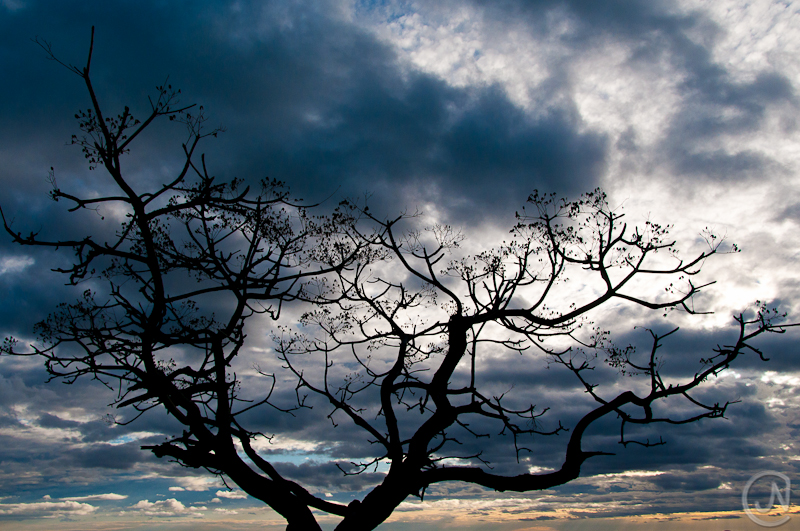
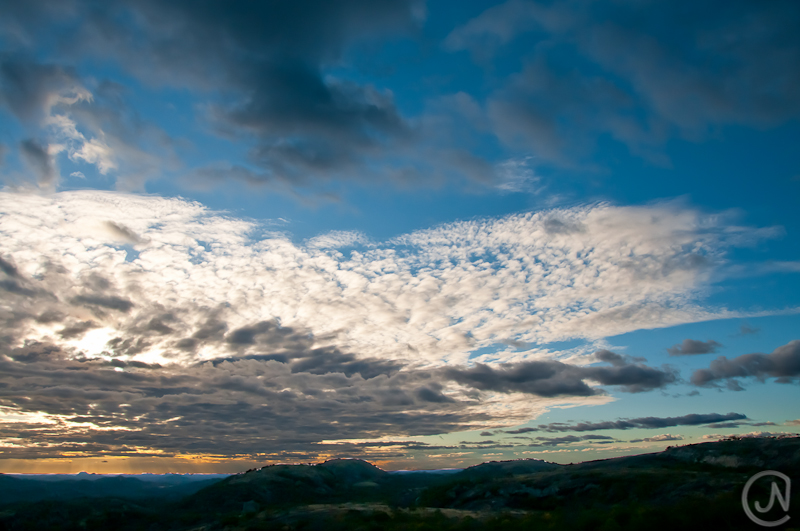
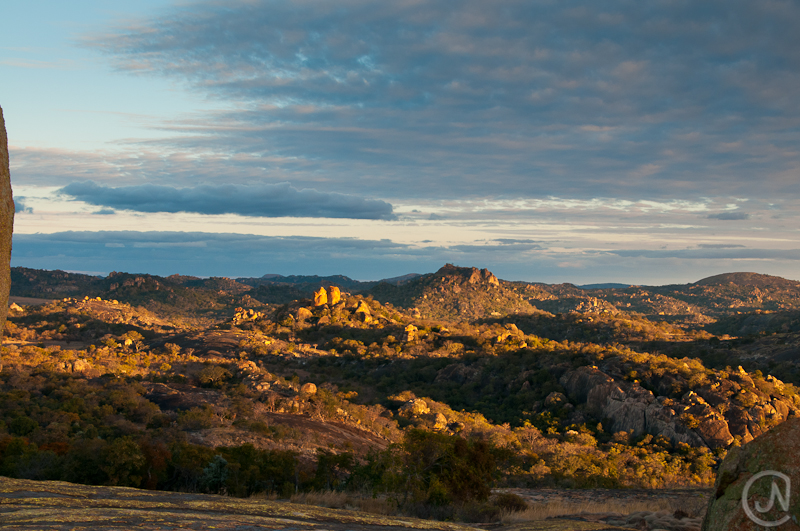
I was told that the closest relative to the rock dassie was the elephant! I’m loving these posts, thank you. I’m also curious as to which version of Zim history you’re getting. Is Mugabe still in power? I haven’t kept up with it in several years, I’m sad to say.
Yes, we were told as well that the rock dassie was the closest relative to the elephant! Pretty crazy. Yes, Mugabe is still in power. It will be very interesting to do some more research on Zim’s history now that we’ve visited and heard from some native Zimbabwean’s.